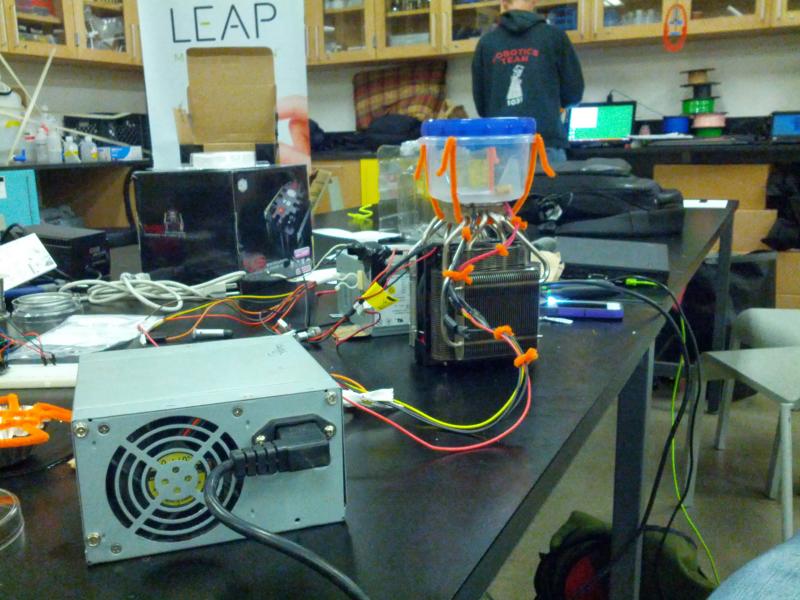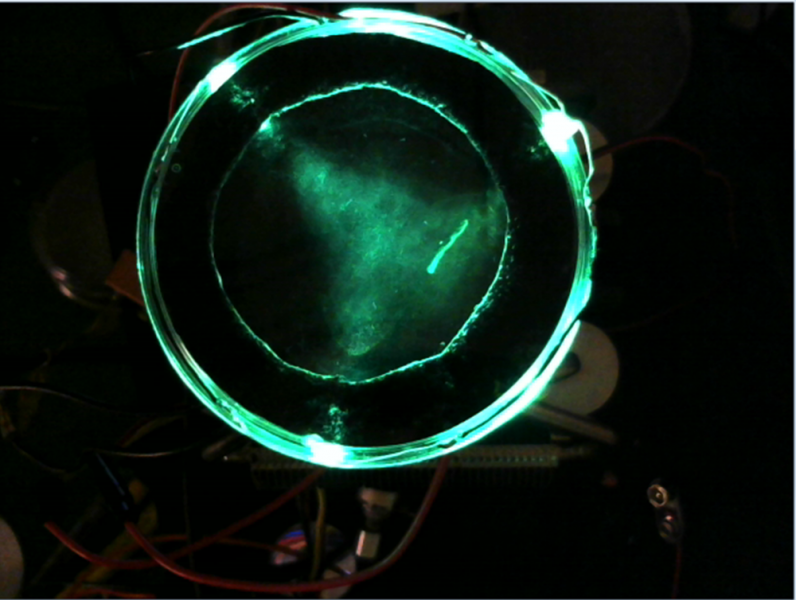Science Hack Day [SHD] is a 48-hour-all-night event where anyone excited about making weird, silly or serious things with science comes together in the same physical space to see what they can prototype within 24 consecutive hours. Designers, developers, scientists and anyone who is excited about making things with science are welcome to attend – no experience in science or hacking is necessary, just an insatiable curiosity.
— http://sciencehackday.org/about/
Guest post by Matt Bellis.
In September 2013, I participated in my eighth Science Hack Day.
As a professor at a small liberal-arts college, these events are wonderful opportunities for hands-on outreach efforts. I may not always have the resources to organise events like this, but whenever I attend, I find I have many meaningful interactions with the attendees about science and why science is important… and fun!
Every time I go, I have been lucky enough to work with some wonderful science enthusiasts, from high-school students to computer professionals at Yahoo! and Google to graphic designers and artists. These are folks who have a love of science, but for most of them, their current careers don’t afford them the opportunity to do science on a daily basis. So SHD is a chance to spend the weekend reconnecting with their lost love.
In the past, I’ve worked with people to develop a Particle Windchime that we used to “hear” BaBar data and a fun Standard Model diagram using cocktail ingredients. I’ve also brought CMS data with which we made a 3D visualisation of dimuon events that shows an accumulating histogram of the invariant mass. Perhaps one of the most satisfying hacks was when I remotely collaborated with participants at a Science Hack Day in Kenya. In the weeks leading up to the event, I helped a few of the hackers understand CMS data and relativistic kinematics. As they were making histograms to “discover” the J/Psi and Upsilon, they were posting them to their Facebook pages: their friends were all intrigued by this work and it was really interesting to see the discussions taking place about these plots and what they might mean!
Last summer, I had a student work on building a turn-key cloud chamber that would not require dry ice. Cloud chambers are a wonderful visual aid when trying to explain the esoteric work we do as high-energy particle physicists. We found instructions online that used Peltier coolers, a computer cooling fan, and scavanged computer power supplies that would cost around $ 100. However, we could not quite get it to work. So, at last September’s SHD, I brought with me two undergraduate physics majors, Meghan Harrington and Jess Muenkel, with the hope that they could work with some of the hackers and makers at SHD who might be able to figure out what we were doing wrong.


It couldn’t have gone better. We enticed a group of about 4–5 attendees (depending on the hour) to help us out. After much prototyping and soldering and poking and twisting we were seeing tracks from our Pb-210 source around midnight! Woo hoo! The next morning we were able to get some good videos of the working device:
What was particularly satisfying was that a number of people that weren’t even working with us kept coming over to see what we were doing. We were able to explain how the cloud chamber worked and talk about radioactivity and when they found out I worked on CMS often I would hear, “You know, I’ve always wondered about X at the Large Hadron Collider, but never had someone to ask. Do you know how….” And so it would go. I even found some people who wanted to look at our ROOT file format to see if they could find a better solution; unsurprisingly they didn’t.
In addition to aiding outreach, the event was a prime example of how science enthusiasts can push back to the “professionals” and contribute to this grand enterprise. Granted, the cloud chamber is going to be used more for outreach and in our labs at Siena College, but it’s a tool to train the next generation of scientists that we might not have been able to get off the ground if not for the time that these folks volunteered one weekend in San Francisco.

At the 2014 April APS meeting in Savannah, Georgia, Meghan and Jess presented this work as a CMS Outreach poster [PDF]. We felt it was appropriate to include the SHD attendees that worked with us as co-authors as this was a true collaborative project, even if it was only over a weekend. I know that it was an experience that they will never forget.
Another Siena student, Kelly Nealon, has continued to develop and refine the cloud chamber design this summer and will work on it for her senior-year project. We now have a webcam that triggers when secondary cosmic ray muons pass through the chamber and we hope to make some simple angular dependence measurements by post-processing the movies that we record. Now that we have this working model, we have all sorts of ideas of what we can do with it. It’s easier to go from 1 to 100 than from 0 to 1, and we couldn’t have done it without the enthusiasm and experience of the SHD attendees.

I can’t recommend the experience enough to anyone who has a chance to participate. And if you want to organise your own, they provide a handy HOWTO guide. Happy science hacking!
The views expressed in CMS blogs are personal views of the author and do not necessarily represent official views of the CMS collaboration.
